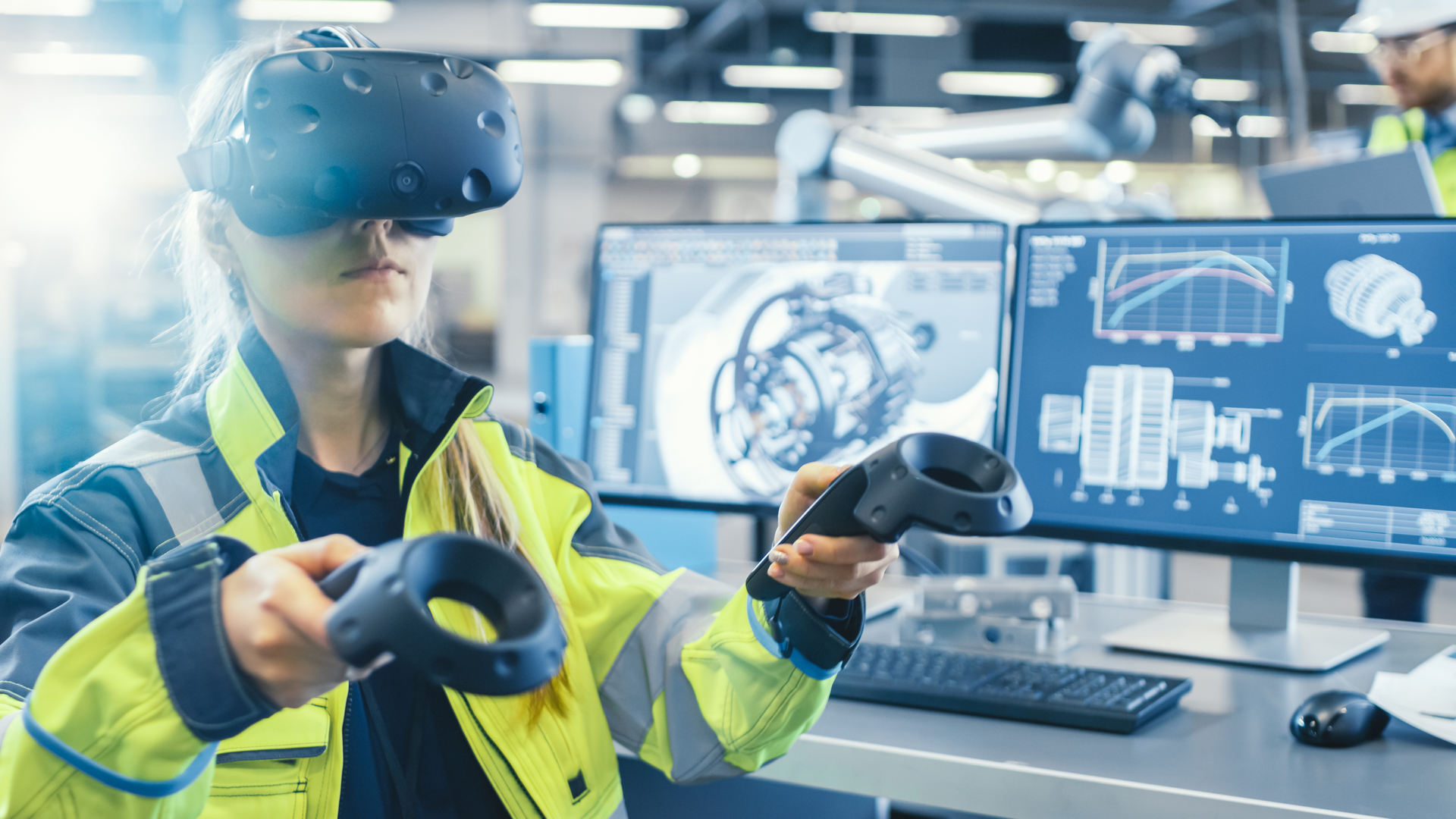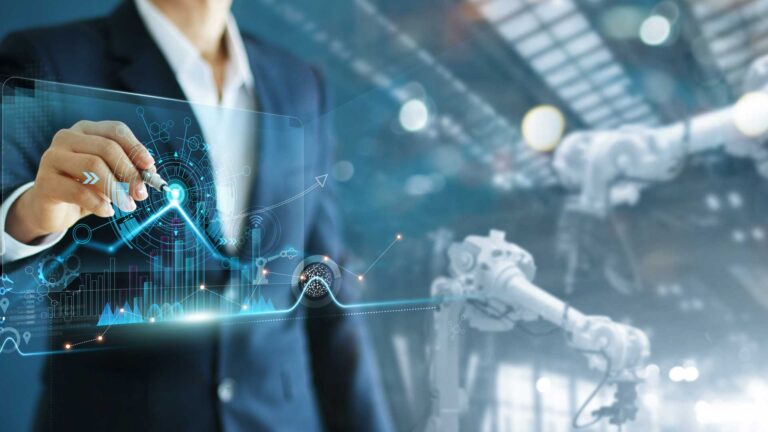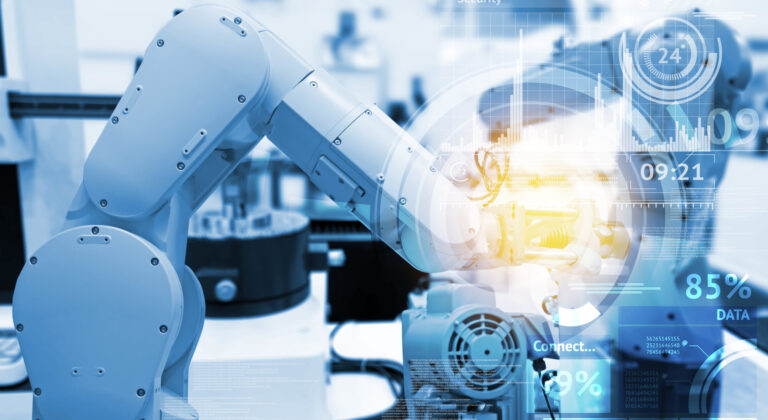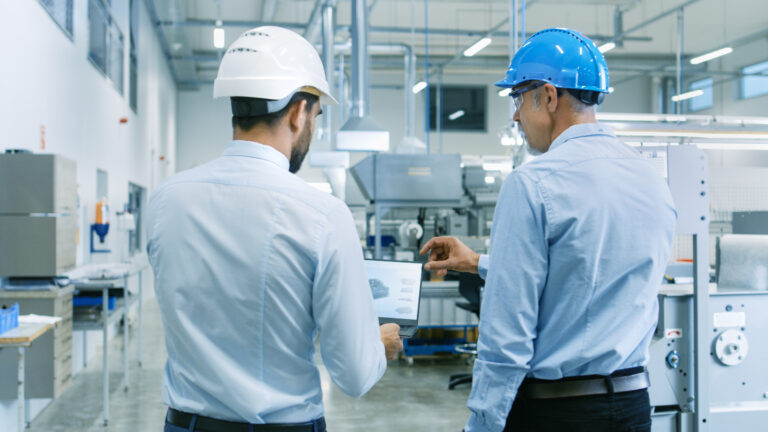
Virtual commissioning is a valuable strategy that helps manufacturers optimize their production lines and expedite innovation. This process validates the operation of control system software against models of physical production systems or machines, freeing manufacturers from the time and expense of the traditional, physical commissioning process. Virtual commissioning is not the only emerging digital technology within the world of manufacturing.
Virtual reality (VR) and augmented reality (AR) are both used in a vast range of industrial settings, allowing manufacturers to visualize entities either in a virtual environment (using VR) or the real world (using AR). Engineers can demonstrate a machine’s design and operation using VR. They can then identify flaws and analyze the design without a physical prototype. Companies can also simulate production processes virtually to improve safety across your plant. Maintenance technicians can harness AR to project information they need directly onto the part that they are working on when checking or repairing a machine.
These are just a few examples of how VR and AR can benefit the world of manufacturing, but throw virtual commissioning into the mix, and an entirely new world of possibilities presents itself.
VR for Virtual Commissioning
VR allows users to visualize things in a virtual environment. A virtual reality system generates a digital version of reality, allowing designers to hold a new product in their hands before it reaches the prototype stages, or enabling engineers to operate a machine before it ever hits the factory floor.
But how can VR be applied to the world of virtual commissioning?
Designers can’t observe and interact with a physical machine while they are in the process of designing it. It doesn’t exist yet, in the real world. But they can create a representation of that proposed production system in the digital realm. They can then optimize the system before they’ve physically started to build it. Virtual commissioning allows companies to verify controller logic and operation of production systems digitally instead of physically. But it can be difficult to visualize that production system in action using virtual commissioning alone. This is true particularly for more complicated pieces of equipment, and this is where VR can help.
Engineers can overlay the results of their simulations using 2D or 3D models of the production system in a VR space. This allows them to walk around the virtual manufacturing floor, and to drill down and identify flaws in the proposed production system by interacting with it in the virtual world. Companies can accelerate production system design by using VR and virtual commissioning in tandem. Analyzing data using the virtual commissioning process alone to identify certain issues could take days. Integrate VR, and it is possible to spot design flaws in just a few minutes.
The same process can be applied to an entire production line, allowing manufacturers to detect bottlenecks and other areas requiring improvement in a virtual environment. This can also improve plant safety, allowing companies to identify dangerous procedures in advance.
Remote Virtual Commissioning
Remote virtual commissioning is another important application area for VR. Here, a small team of engineers physically travel to the location where the production system will be installed and commissioned. A larger team stays behind and connects to the location, visualizing the commissioning process in a VR environment. Now people can participate without traveling to the physical installation site. This allows more experts to analyze the commissioning process and reduces the time and expenditure associated with physical site visits.
AR for Virtual Commissioning
AR is not the same as VR, but it is also applicable to virtual commissioning. Rather than navigating a completely virtual environment, AR overlays virtual elements on top of the real-world environment. An AR interface can overlay directions and street names to help a user navigate an unfamiliar city.
AR relies on a real-world environment. So, this technology is most applicable to virtual commissioning when a mixture of simulation and sensor data is overlaid on top of a real-world production system. There are many ways companies can use augmented reality in their production environment. The information that technicians require to repair a machine can be projected directly onto the part they’re dealing with. This speeds up the maintenance process, eliminating the need for the technician to consult instruction manuals and charts. It also guides the technician through the procedure, reducing the likelihood of errors and helping train inexperienced staff members.
Incorporating virtual commissioning with AR, engineers can walk down the physical, real-world manufacturing floor and observe a wealth of augmented information from their simulations. They can then identify issues and debug them quickly. In other words: an augmented reality factory floor. Wherever there is information available from the virtual commissioning process, AR provides production plants with an intuitive and highly accessible way to access that information. AR is a powerful tool, enabling companies to visualize the information necessary to optimize and safeguard the factory floor in an intuitive manner
Recap
- Virtual commissioning is a promising strategy. VR and AR are powerful, emerging technologies, each of which is highly valuable in the world of manufacturing. Virtual commissioning uses simulation to expedite the design, installation, and testing processes plants rely on. VR and AR create virtual spaces, providing an additional realm in which to check and further improve these processes. When virtual commissioning is used in combination with AR and VR, these technologies allow more effective analysis of production issues using powerful and interactive visual representations.
- VR enables the user to visualize things in a virtual space. By leveraging virtual commissioning simulations in a VR environment, companies can identify flaws in individual manufacturing cells and across the entire production process. This further accelerates the commissioning process, improving safety for both operators and consumers. Remote virtual commissioning, another important application, allows teams of remote specialists to help commission equipment in a shared VR environment.
- AR relies on real-world environments, overlaying important information when, for example, a technician is fixing a piece of equipment. This accelerates the maintenance process, reduces the likelihood of errors, and can aid staff training. Plus, incorporating AR across the factory floor enables companies to visualize vital virtual commissioning information, identify issues, debug them quickly, and optimize the production environment.






